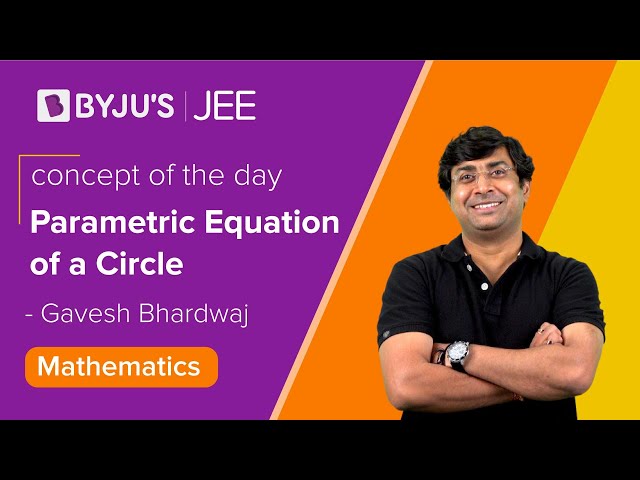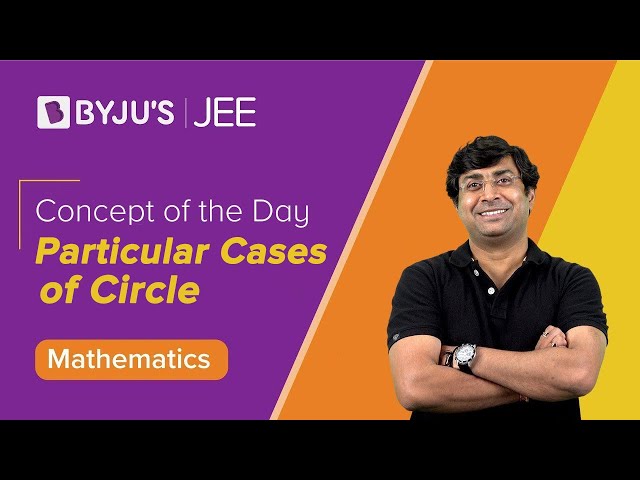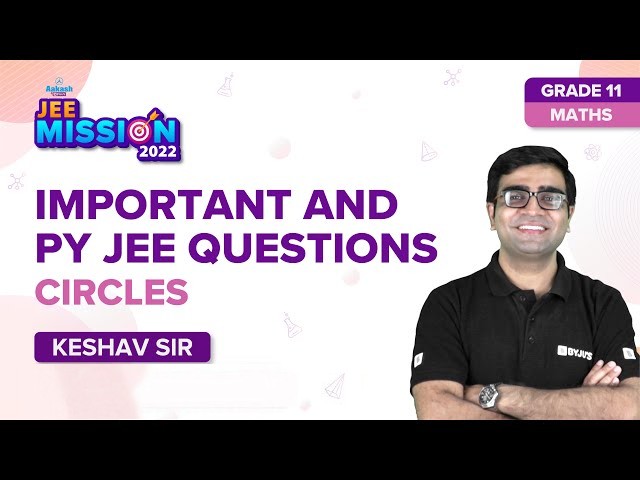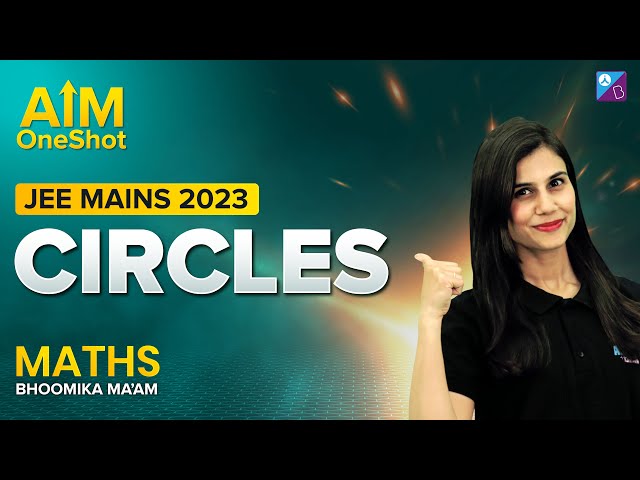A circle is the locus of points which moves in a plane such that its distance from a fixed point is always constant. The fixed point is called the ‘centre’ while the fixed distance is called the ‘radius’. This article will help you to have a clear idea of the topics such as circle, equation of tangent, normal and chord of contact.
Equation of Circle
1. Standard equation of circle:
Centre = (0, 0) and
Radius = r
2. Equation of a circle in centre radius form:
Centre = (h, k), Radius = r.
3. Equation of a circle in general form:
Centre = (–g, –f )
r2 = g2 + f2 – c
4. Equation of a circle with points P(x1, y1) and Q(x2, y2) as extremities of diameter:
(x – x1) (x – x2) + (y – y1) (y – y2) = 0
5. Equation of circle through three non-collinear points P(x1, y1), Q(x2, y2) and R(x3, y3):
Area of circle = πr2
Perimeter = 2πr, where r is the radius.
Equation of Circle under Different Conditions
- Touches both axes with centre (a, a) and radius r = a

Touches x-axis only, with centre (α, a)

- Touches y-axis only at (a, β)

- Passes through the origin with centre (α/2, β/2)

Parametric Equation of Circle
Equation of circle = x2 + y2 = r2
X = r cos θ
Y = r sin θ
Squaring both sides,
x2 + y2 = (r2 cos2θ + r2 sin2θ)

= r2 (cos2θ + sin2θ)
x2 + y2 = r2
Position of a point w.r.t. to circle
Let the circle be x2 + y2 + 2gx + 2fy + c = 0 and p(x1, y1) be the point.

R – radius
cp > R , {point lie outside}
cp = R , {on the curve}
cp < R , {inside the curve}
Parametric Equation of a Circle – Video Lesson

Equation of Tangents and Normal
The Equation of Tangents and Normal are explained below. Let the equation of the circle be
x2 + y2 + 2gx + 2fy + c = 0
A tangent at point P(x1, y1).
Equation of Tangent of Circle
Tangent having slope ‘m’
y = mx + C
Where,
Pair of tangents from external point p (x1, y1)
T2 = ss1
Where,

Equation of normal at p(x1, y1) to the circle
Equation of Chord

Equation of chord PQ
Chord of Contact

AB is called the chord of contact. The equation of contact is T = 0.
Radical Axis to the Two Circles
Equation of radical axis to the two circles S1 and S2,
The equation of the radical axis is
S1 – S2 = 0
Family of Circles
S1 + λS2 = 0
Where ‘λ’ is the parameter

Particular Cases of Circle

Problems on Circles
Illustration 1: Find the centre and the radius of the circle
Solution:
We rewrite the given equation as
Hence, the centre is (4/3, 5/3), and the radius (r) is
Illustration 2: Find the equation of the circle with centre (1, 2) and which passes through the point (4, 6).
Solution:
The radius of the circle is
Hence, the equation of the circle is
Illustration 3: Find the equation of the circle whose diameter is the line joining the points (-4, 3) and (12, -1). Find also the length of the intercept made by it on the y-axis.
Solution:
The required equation of the circle is
On the y-axis,
Hence, the length of intercept on the y-axis
Illustration 4: Find the equation of the circle passing through (1, 1), (2, -1) and (3, 2).
Solution:
Let the equation be
Substituting the coordinates of the three given points, we get
Solving the above three equations, we obtain
Hence, the equation of the circle is
Illustration 5: Find the equation of the circle whose centre is (3, 4) and which touches the line 5x + 12y = 1.
Solution:
Let r be the radius of the circle.
Then,
r = distance of the centre, i.e., point (3, 4) from the line 5x + 12y = 1
Hence, the required equation of the circle is
Illustration 6: Find the greatest distance of the point P(10, 7) from the circle
Solution:
Since
Join P with the centre C(2, 1) of the given circle.
Suppose PC cuts the circle at A and B, where A is nearer to C.
Then, PB is the greatest distance of P from the circle.
We have,
and CB = radius
Therefore, PB = PC + CB = 10 + 5 = 15.
Illustration 7: A foot of the normal from the point (4, 3) to a circle is (2, 1), and the diameter of the circle has the equation 2x – y = 2. Then, find the equation of the circle.
Solution:
The line joining (4, 3) and (2, 1) is also along a diameter.
So, the centre is the point of intersection of the diameter 2x – y = 2 and the line
Solving these, we get the centre as (1, 0).
Also, the radius = the distance between (1, 0) and (2, 1)
Hence, the equation of circle is
Illustration 8: Find the length of the common chord of the circles
Solution:
Equation of common chord is
Centre of S1 is C1(-1, -3) and its radius is
Distance of C1 from the common chord
Therefore, the length of common chord
Illustration 9: A pair of perpendicular straight lines pass through the origin and also through the point of intersection of the curve. The set containing the value of a is
(a) {-2, 2}
(b) {-3, 3}
(c) {-4, 4}
(d) {-5, 5}
Solution:
To make the curve
Since this is a pair of perpendicular straight lines, we have
∴ a2 – 4 + a2 – 4 = 0
⇒ a2 – 4 = 0
⇒ a = ±2
Therefore, the required set of a is {-2, 2}.
Hence, the correct answer is (a).
Circles – Important Topics

Circles – Class 11 Maths Chapter 11 Quiz

Circles – Important Questions

Circles – Solved Problems

Straight Lines and Circles – Top 12 Important Questions

Straight Lines & Circles JEE Advanced Questions

Circles – One Shot Revision

Frequently Asked Questions
Give the standard equation of a circle with centre (0, 0) and radius r.
The standard equation of a circle with centre (0, 0) and radius r is given by x2 + y2 = r2.
What do you mean by a chord of a circle?
A chord is a line segment joining two points on a circle. The diameter is the largest chord.
Give the standard equation of a circle with centre (h, k) and radius r.
The standard equation of a circle with centre (h, k) and radius r is given by (x-h)2 + (y-k)2 = r2.

Comments